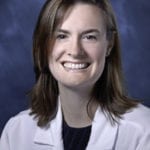New Year’s Resolutions | B.J. Rimel, MD
 This New Year, 2013, marks the year of the snake, the Jewish year 5773-5774 and my second year in practice. Gynecologic oncology is a career that thrills me with the promise of exciting days in the OR. Performing surgery is one of the most fulfilling things we get to do in our practice and it is often the start of the long relationship we have with our patients. Our cases tend to be complex, even when the pathology is benign, leading to long operative times and missed evening plans.
This New Year, 2013, marks the year of the snake, the Jewish year 5773-5774 and my second year in practice. Gynecologic oncology is a career that thrills me with the promise of exciting days in the OR. Performing surgery is one of the most fulfilling things we get to do in our practice and it is often the start of the long relationship we have with our patients. Our cases tend to be complex, even when the pathology is benign, leading to long operative times and missed evening plans.
Time in clinic is also rewarding; seeing patients who are doing well is one of my favorite activities. However, when patients are struggling it can be exhausting. Frequently, there is too much to say and too little time. This leaves me with a sense of unfinished business that tugs at my conscience in the early hours of the morning. Sleep is already a luxury destroyed by my 10 month old who keeps strictly New York hours in my Los Angeles home.
The reality of our job dealing with life and death issues and the chronic awkward juggle of family and clinical duties can leave many oncologists with what is termed “physician burnout”. A recent review of oncologist burnout (“Oncologist Burnout: Causes, Consequences and Responses”) published in the April 10, 2012, issue of the Journal of Clinical Oncology suggests several different causes including excess work load, inefficiency, and loss of autonomy.
The increased workload can lead to tension between work and home life. See exhibit A—the picture of my car drink holder. A large study of US surgeons by the same group, “Burnout and career satisfaction among American surgeons,” which was published in the Annals of Surgery in 2009 revealed that 50% of participants reported having a work-home conflict in the last three weeks. Another large study of physician burnout published last year in the Archives of Internal Medicine (“MD Burnout and Satisfaction with Work-Life Balance among US Physicians Relative to the General US Population”) invited over 27,000 physicians to participate but only 26% responded. Of those who responded, 46% reported at least one symptom of burnout.
These statistics really alarm me. How burned-out were the other 74% who didn’t respond? Sure, this job is not for the faint of heart, but are we really facing an epidemic of cynicism and depression in medicine? Thinking on this idea, while listening to the sound of the ventilator in the ICU and writing a 2 a.m. progress note, I feel strangely lighthearted. In my opinion, the solution to burnout may be in each other. I am standing next to one of my partners who despite the hour or his seniority came to assist me because in his words, “It’s what we do for each other.” Happy New Year and may we all have partners like that.
